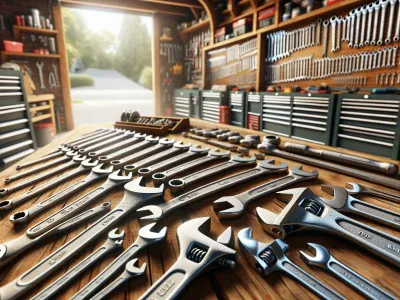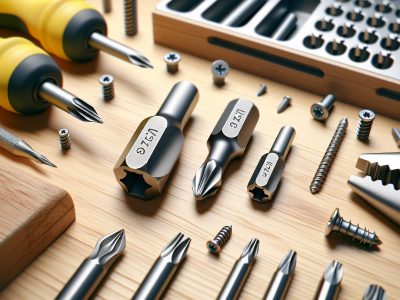Key Differences Between Screw and Bolt: A Complete Guide to Choosing the Right Fastener
Imagine you’re assembling furniture or tackling a DIY project, and you reach for hardware. But wait—how do you know if you need a screw or a bolt? These seemingly similar fasteners often cause confusion, yet understanding their differences can save you time, effort, and frustration. While they might look alike at first glance, their purpose and design hold distinct roles in the world of construction and mechanics.
Choosing the right fastener isn’t just about convenience; it’s about ensuring the stability and durability of whatever you’re building. Whether you’re securing a shelf or constructing something more complex, knowing when to pick a screw over a bolt (or vice versa) can make all the difference. So, what sets them apart? Let’s investigate into the key distinctions that define these essential tools and help you make informed decisions for your next project.
Understanding Screws And Bolts
Screws and bolts are fundamental in fastening applications, but their differences determine their specific uses. Recognizing these differences ensures the proper assembly and long-term reliability of any project.
What Is A Screw?
A screw is a threaded fastener designed to secure materials by creating its own internal thread as it’s driven into a surface. It’s commonly used in wood, plastic, and soft metals. Screws typically feature a pointed tip and helical ridges that grip the material.
Examples include wood screws, deck screws, and drywall screws. A Phillips-head wood screw with coarse threads easily penetrates timber, while a self-tapping screw securely fastens sheet metal.
Screws rely on friction and direct engagement with the material for holding power. You can tighten them using a screwdriver or similar tool, providing a versatile fastening option for various applications.
What Is A Bolt?
A bolt is a fastener paired with a nut, functioning through external threads and pre-drilled holes. Its primary purpose is to clamp two or more components together. Unlike screws, bolts require two-sided access for installation.
Examples include hex bolts, carriage bolts, and anchor bolts. A hex bolt with a nut secures heavy machinery parts, while anchor bolts fix steel columns to concrete foundations.
Bolts offer greater tensile strength than screws due to their design and materials. Installation involves using wrenches or socket tools to apply torque. They’re often preferred for structural or load-bearing connections.
Key Differences Between Screws And Bolts
When choosing between screws and bolts for your project, understanding their key differences ensures proper assembly and functionality. Below, distinctions in design, usage, applications, and durability are outlined.
Design And Structure
Screws have a uniform threaded shaft and typically include a pointed tip that allows them to create threads directly into materials like wood or plastic. Most screws are driven using a screwdriver or drill and feature heads like flat, Phillips, or hex designs. Examples include drywall screws with coarse threads and wood screws with tapered designs.
Bolts, in contrast, have a partially threaded shaft and often require a nut for their operation. They lack pointed tips and rely on pre-threaded or pre-drilled holes. The heads of bolts, such as hex or square, are designed for wrenches or sockets. Examples include hex bolts for structural applications and carriage bolts with smooth, rounded heads.
Method Of Use
Screws are self-threading, penetrating directly into materials and holding securely through friction. Their installation is straightforward, requiring only a screwdriver or drill. For instance, deck screws are often used in home improvement projects where quick fastening into wood is needed.
Bolts require a pre-drilled or threaded hole and a nut for securing components. They act as a clamping mechanism, ensuring tight connections under significant loads. Installation involves using wrenches, pliers, or sockets. For example, putting together steel beams with hex bolts demands both precision and preexisting holes.
Applications
Screws are suitable for lightweight materials and tasks requiring direct fastening. They are commonly used in carpentry, furniture assembly, and home renovations. Examples include attaching hinges to doors using wood screws and securing plasterboard with drywall screws.
Bolts are ideal for demanding structural and load-bearing applications. They’re preferred in construction, automotive, and industrial assembly where strength is critical. Examples include assembling scaffoldings with anchor bolts and mounting engines using carriage bolts.
Strength And Durability
Screws generally perform well for non-structural tasks but may lack tensile strength compared to bolts. They resist loosening when driven into softer materials. But, they could fail under high vibration or shear forces.
Bolts, designed for high tension and durability, excel in environments requiring reliable load-bearing connections. They withstand immense stress and vibration, particularly when paired with washers and nuts, enhancing their grip and stability in challenging conditions.
Pros And Cons Of Screws And Bolts
When comparing screws and bolts, understanding their advantages and drawbacks helps you make efficient choices for projects.
Advantages Of Screws
- Versatility: Screws adapt to various materials, including wood, plastic, and soft metals. For instance, wood screws secure furniture joints, while drywall screws anchor panels effectively.
- Self-Threading: Screws eliminate the need for pre-drilled holes by creating threads as they’re driven. This characteristic simplifies assembly, especially in lightweight applications.
- Ease Of Use: Due to their design, screws can be driven and removed repeatedly with minimal damage to materials, making them user-friendly for repairs and adjustments.
Advantages Of Bolts
- Strength: Bolts offer superior tensile strength, making them suitable for load-bearing and structural uses. Hex bolts, for example, provide strong connections in steel beam frameworks.
- Reusable Fasteners: Bolts work with nuts and washers, enabling easy disassembly and reuse, which benefits temporary or adjustable structures.
- Consistency: The uniform design of bolts minimizes the risk of material stripping, ensuring a secure and stable hold in industrial and construction settings.
Disadvantages Of Screws
- Weaker Load Capacity: Screws lack the tensile strength necessary for high-tension environments, which limits their use in heavy-duty projects. Overloading screws can lead to bending or breakage.
- Material Damage: Repeatedly screwing into the same material weakens threads and reduces grip strength, especially in soft woods or metals.
- Limited Applications: Screws might fail in scenarios requiring clamped joints or resistance to shear forces, as their design doesn’t support such demands.
- Complex Assembly: Bolts require pre-drilled holes, nuts, and washers, complicating installation and reducing their efficiency in quick tasks.
- Cost: Higher manufacturing and material quality make bolts more expensive compared to screws, increasing budget concerns in large-scale projects.
- Rigid Design: The reliance on nuts means bolts can’t self-thread, which might limit their flexibility in diverse material types.
When To Use A Screw Versus A Bolt
Choosing between screws and bolts depends on the specific requirements of your project. Understanding when each fastener performs best can prevent misapplications and ensure structural integrity.
Common Scenarios For Screws
Screws work best for lightweight or non-structural tasks. You can use them in cases where materials need direct fastening without pre-drilled holes. For example, wood screws are well-suited for fixing wooden furniture, assembling shelves, or attaching hinges. Similarly, drywall screws anchor wallboards securely to wooden or metal studs.
Another advantage of screws lies in repairs—if you’re reattaching loose components, their self-threading design simplifies the process. But, screws may fail under heavy loads or in projects requiring disassembly due to their lower tensile strength compared to bolts.
Common Scenarios For Bolts
Bolts excel in high-strength, load-bearing applications. You would typically choose bolts for structural projects where durability and stability are critical. For instance, hex bolts are commonly used in constructing bridges or assembling machinery, while anchor bolts secure heavy equipment to concrete bases.
Bolts are also ideal for situations requiring disassembly or adjustments. Nuts, used alongside bolts, allow for repeated assembly without wear on materials. Remember, bolts require pre-drilled holes and additional tools, making them less flexible than screws for quick tasks.
Conclusion
Understanding the differences between screws and bolts is essential for choosing the right fastener for your project. Each serves unique purposes based on design, strength, and application. By selecting the appropriate option, you can ensure the stability, durability, and success of your assembly. Whether you’re tackling a DIY task or a structural project, knowing when to use screws or bolts will help you achieve reliable and long-lasting results.
- Understanding the Difference Between Yield and Return: Key Insights for Investors - October 1, 2025
- Key Differences Between Saving and Checking Accounts: Which Is Right for You? - October 1, 2025
- Top 7 Substitute Options for Bay Leaf to Enhance Your Recipes - October 1, 2025





